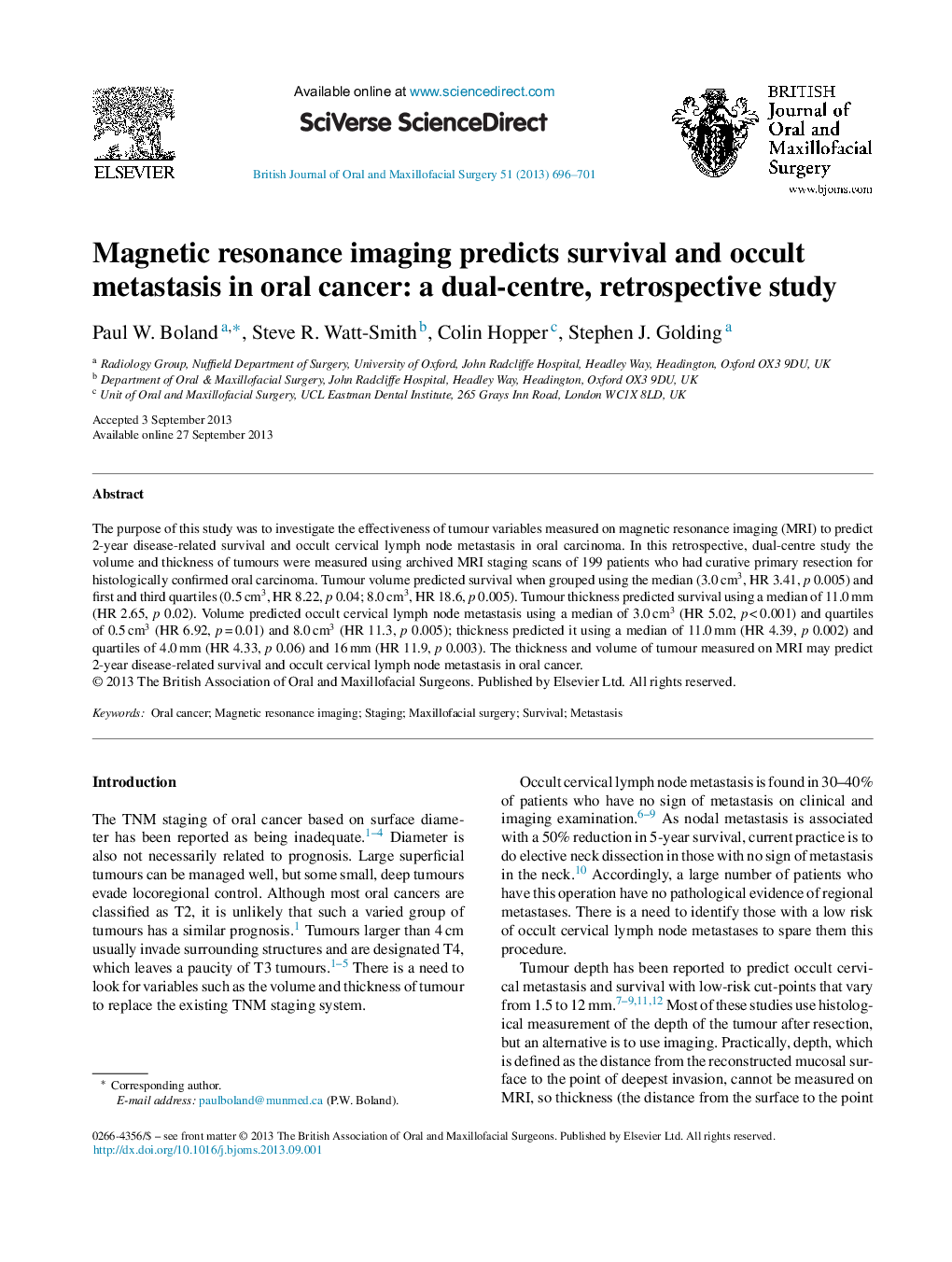| Article ID | Journal | Published Year | Pages | File Type |
|---|---|---|---|---|
| 3123665 | British Journal of Oral and Maxillofacial Surgery | 2013 | 6 Pages |
The purpose of this study was to investigate the effectiveness of tumour variables measured on magnetic resonance imaging (MRI) to predict 2-year disease-related survival and occult cervical lymph node metastasis in oral carcinoma. In this retrospective, dual-centre study the volume and thickness of tumours were measured using archived MRI staging scans of 199 patients who had curative primary resection for histologically confirmed oral carcinoma. Tumour volume predicted survival when grouped using the median (3.0 cm3, HR 3.41, p 0.005) and first and third quartiles (0.5 cm3, HR 8.22, p 0.04; 8.0 cm3, HR 18.6, p 0.005). Tumour thickness predicted survival using a median of 11.0 mm (HR 2.65, p 0.02). Volume predicted occult cervical lymph node metastasis using a median of 3.0 cm3 (HR 5.02, p < 0.001) and quartiles of 0.5 cm3 (HR 6.92, p = 0.01) and 8.0 cm3 (HR 11.3, p 0.005); thickness predicted it using a median of 11.0 mm (HR 4.39, p 0.002) and quartiles of 4.0 mm (HR 4.33, p 0.06) and 16 mm (HR 11.9, p 0.003). The thickness and volume of tumour measured on MRI may predict 2-year disease-related survival and occult cervical lymph node metastasis in oral cancer.
